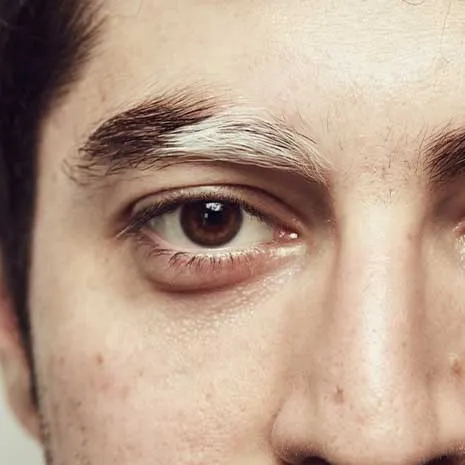Hair and Eyebrow Whitening in Vitiligo Patients: Causes and Treatments

Hair and Eyebrow Whitening in Vitiligo Patients: Causes and Treatments
- 15 August 2025
- 196

Vitiligo Affects More Than Skin: Hair and Eyebrows Can Be Involved
While vitiligo is most commonly associated with white patches on the skin, it can also affect hair-bearing areas, leading to white or depigmented hair. This condition is medically referred to as leukotrichia. It occurs when the same autoimmune process that targets skin melanocytes also affects melanocytes in the hair follicles.
As a result, vitiligo patients may experience white hair strands, eyebrow whitening, or depigmentation of eyelashes and beard hair.
What Causes Hair and Eyebrow Whitening in Vitiligo?
Melanocytes, the pigment-producing cells, are present not only in the skin but also in hair follicles. In vitiligo, these cells are attacked by the immune system, leading to loss of melanin, the pigment responsible for hair color.
This leads to:
- The growth of white, colorless hairs
- Often localized to areas where the skin is also depigmented
- In some cases, hair depigmentation may precede or occur without visible skin lesions
This process is considered more resistant to treatment than cutaneous vitiligo, as follicular melanocytes are less abundant.
Most Commonly Affected Areas
Hair depigmentation can occur in various areas of the body, including:
- Scalp (especially the temples or hairline)
- Eyebrows
- Eyelashes
- Beard and mustache area
- Body hair (underarms, pubic region)
For many patients, eyebrow or eyelash whitening is aesthetic concern due to its visibility.
Is This Whitening Permanent?
Leukotrichia is often considered more permanent than skin depigmentation because melanocyte reservoirs in hair follicles are limited or destroyed. However, with appropriate treatment, partial or even complete repigmentation may be possible in some cases.
How Is It Diagnosed?
Not all white hair or eyebrow changes are due to vitiligo. Differential diagnoses include:
- Poliosis: Localized hair whitening, may be genetic or post-inflammatory
- Aging: Early graying not related to vitiligo
- Alopecia areata: Regrowing hair may initially appear white
- Vitamin B12 deficiency or thyroid disorders
In vitiligo-related leukotrichia, depigmented hairs are typically pure white and sharply localized, often corresponding with depigmented skin.
Treatment Options for Hair and Eyebrow Depigmentation
Treating leukotrichia is challenging, but several options may offer benefits:
1. Narrowband UVB Phototherapy
- Widely used for skin vitiligo
- Less effective for deep follicular involvement
- May help in scalp vitiligo when combined with topical agents
2. 308nm Excimer Laser
- Targets small areas precisely
- Suitable for eyebrows, beard, and localized patches
3. Topical Tacrolimus or Corticosteroids
- Limited penetration into follicular tissue
- Often used in combination with light therapy
4. Melanocyte Transplantation (Experimental)
- Used in stable vitiligo with leukotrichia
- Involves transferring pigment cells to the hair-bearing area
- Promising but still under investigation
5. Cosmetic Solutions (Microblading, Camouflage)
- Especially useful for eyebrow or beard whitening
- Non-medical but improves patient confidence and appearance
The Psychological Impact: Not Just a Cosmetic Issue
Hair and eyebrow whitening, especially in visible areas, can cause significant emotional distress, including:
- Low self-esteem
- Social anxiety
- Depression
- Body image issues
Supportive care, psychological counseling, and aesthetic advice can be crucial in managing the emotional burden of leukotrichia.
Frequently Asked Questions
Yes. If accompanied by white skin patches or known vitiligo history, it likely indicates leukotrichia.
Rarely. However, with certain treatments like excimer laser or melanocyte transplant, partial repigmentation may occur.
It’s difficult, but targeted therapies may offer improvement, especially in early or stable cases.
Yes. Using high-quality products or procedures like microblading is safe and helps enhance appearance.
Not necessarily, but leukotrichia can be a marker of more resistant vitiligo. Regular dermatological follow-up is recommended.
